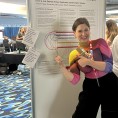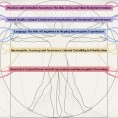
If interoception is culturally learned rather than biologically universal, how should we design for this variability?
Interoception—the perception of internal bodily states such as heartbeat, hunger, and emotion—is foundational to well-being. Despite its significance in wellness technologies within Human-Computer Interaction (HCI), existing designs often impose a universalized model of bodily awareness, shaped by Western-centric assumptions, and overlook cultural variability. This paper integrates perspectives from neuroscience, cultural psychology, Science and Technology Studies (STS), and HCI to critically examine how culture shapes interoception. Through a thematic analysis of the literature, we identify key cultural and contextual dimensions that influence interoceptive experiences and their implications for wellness technologies. Rather than prescribing design solutions, this work challenges dominant paradigms in wellness technology, emphasizing interoception as culturally shaped rather than biologically universal. We highlight overlooked complexities in interoceptive experience and raise critical questions for the development of more inclusive, contextually responsive wellness technologies—technologies that do not simply monitor bodies, but support people in reconnecting with them on their own terms.



